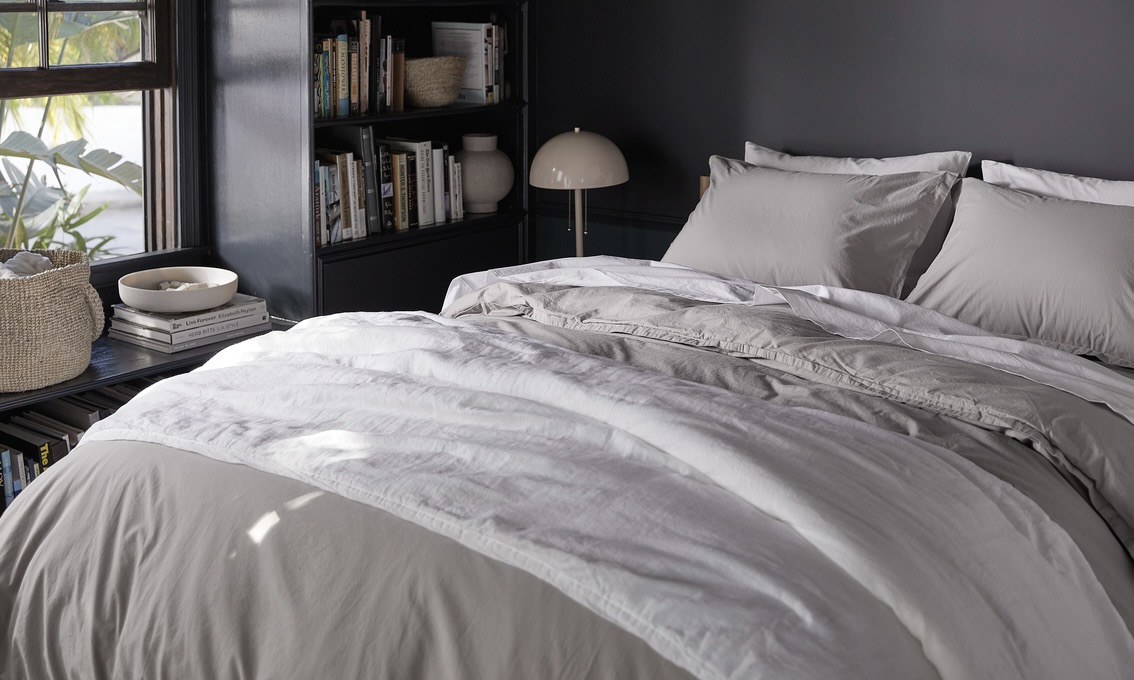Introduction
Comfortable and soft bed linen is very important factor that can make a bedroom a sanctuary of sweet dreams. Nevertheless, even when buying the best sheets and pillow cases, these may deteriorate over time and lose their smoothness as well as aesthetic appeal. Using this article, the reader is taken through the issue of how often the soft bed linen should be changed in order to make the bed as comfortable, hygienically sound, as well as durable as possible.
Factors Influencing Replacement Frequency
Frequency of use, quality of the materials, washing and changing practices, and personal likings are some of the aspects that determine the right time to change soft bed linen. Bed linen that is made from better-quality fabrics like Egyptian cotton or linen may be more effective in dealing with high usage and washing frequency compared to the lower-quality varieties.
Signs of Wear and Tear
Signs that can point to the fact that it is high time to replace soft bed linen include some of the signs that one is likely to notice when using soft bed linen include; This refers to what is commonly known as shrinkage, wear and tear, or general deterioration of the fabric’s surface such as, stitching unraveling, wearing out of the fabric surface, fading of colors, and thinning of the fabric. Such signs do not only give a poor impression of the bedding but also affect its durability and texture.
Hygiene Considerations
Another essential factor that one needs to look at when deciding on how often to change soft bed linen is hygiene. During the time of use, bedding collects sweat, body oils, skin cells, and allergens that foster bacterial and other micro-organism growth such as dust mites. These hygiene considerations can be somewhat offset by the practice of frequent washing but after some time, even the most rigorous washing may not be sufficient to bring the odorless factor in aged bed linen to its peak.
Recommended Replacement Intervals
Specifically, it is impossible to unite many separate answers to the question of how often soft bed linen should be replaced, but it is better to change bedding every 2-3 years. This interval provides ample space to replace bedding more frequently to suit the comfort and cleanliness required. Nevertheless, some people who are very sensitive to hygiene or have specific preference may change their bed linen more often.
Personal Preferences and Lifestyle Factors
Finally, the decision whether soft bed linen should be replaced should also be made based on the personal choice and on the lifestyle of the person. It is also important to note that some people may wish to change their bedding more often than others, perhaps because they want to keep up with the current fashions or because the smooth and fresh feel of new linen is more appealing to them. Also, due to allergies, skin sensitization, or climate changes it is recommended that the mattress should be replaced more often to provide a clean and healthy sleeping environment.
Sustainable Practices
In addition to quality and comfort considerations, an increasing number of consumers are also factoring sustainability into their bedding choices. Sustainable practices such as using organic, eco-friendly materials and supporting ethically sourced manufacturing processes can contribute to a longer lifespan for soft bed linen. By investing in sustainable bedding options and caring for them properly, individuals can reduce their environmental footprint while enjoying the benefits of luxurious, long-lasting bedding.
Maintenance and Care
Proper maintenance and care play a crucial role in extending the lifespan of soft bed linen. Following manufacturer’s care instructions, including washing at the appropriate temperature, using mild detergents, and avoiding harsh chemicals or bleach, can help preserve the integrity of the fabric and prevent premature wear. Additionally, storing bedding in a cool, dry place away from direct sunlight can prevent discoloration and degradation of materials over time.
Seasonal Considerations
Seasonal changes can also impact the replacement frequency of soft bed linen. In warmer climates or during the summer months, breathable, lightweight fabrics such as cotton or linen may be preferred, while in colder climates or during the winter season, thicker, insulating materials like flannel or fleece may be more suitable. Adapting bedding choices to seasonal preferences can help maintain comfort and prolong the lifespan of bedding by reducing the strain of excessive washing or usage.
Investment in Quality
While high-quality soft bed linen may come with a higher upfront cost, it can ultimately be a worthwhile investment in comfort, durability, and longevity. Quality bedding made from superior materials and craftsmanship is more likely to withstand the rigors of regular use and laundering, providing years of luxurious sleep experiences. By prioritizing quality over price and choosing reputable brands known for their commitment to excellence, consumers can ensure that their bedding investment pays off in the long run.
Conclusion
Therefore, the problem of when one should consider getting new soft bed linen is multifaceted and includes issues of quality, visible and invisible wear and tear, hygiene, recommended replacement time, and personal preferences. If you take your time to carefully observe the condition of your bedding and factor in the above elements, you will be in a position to maintain your bedroom as a comfortable, clean, and comfortable place to sleep.

